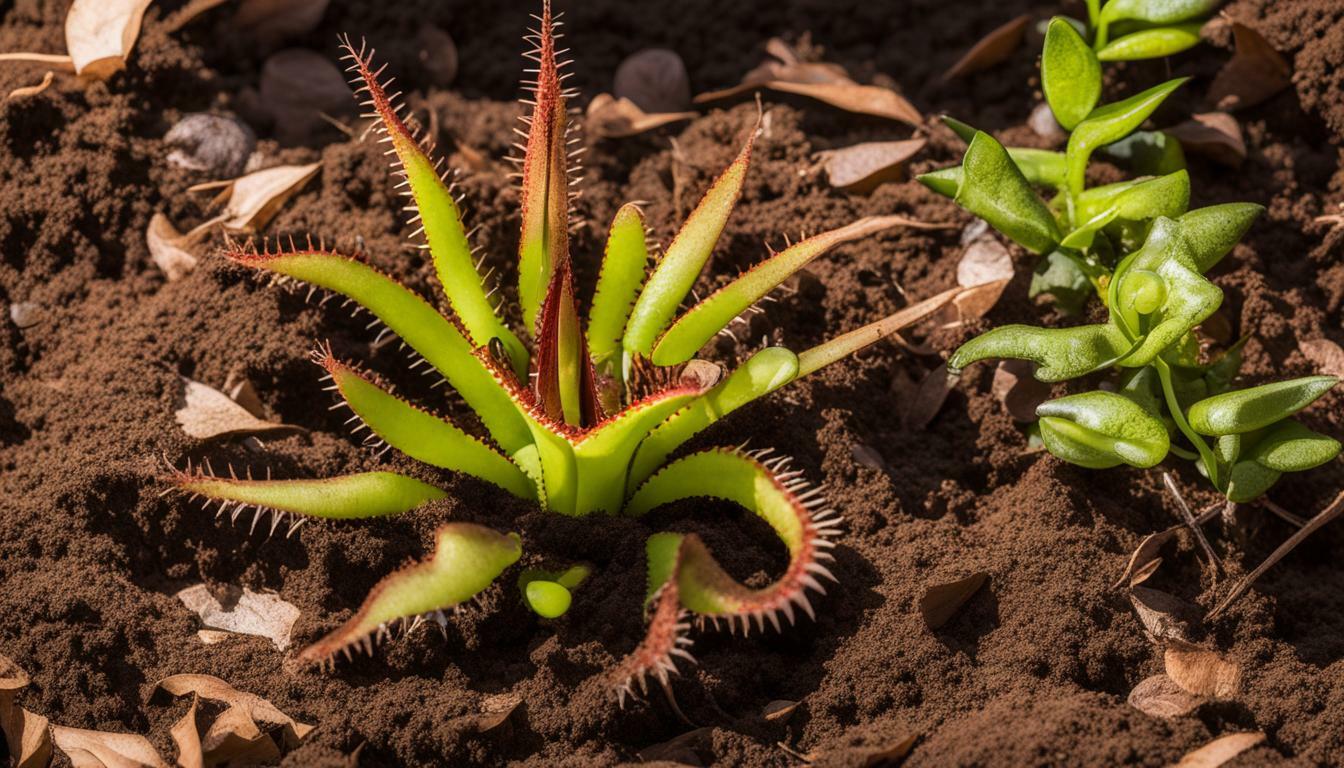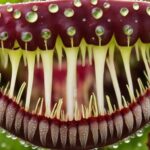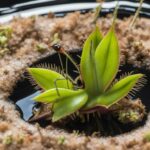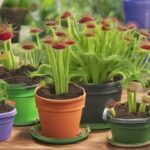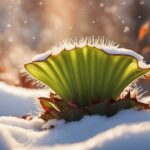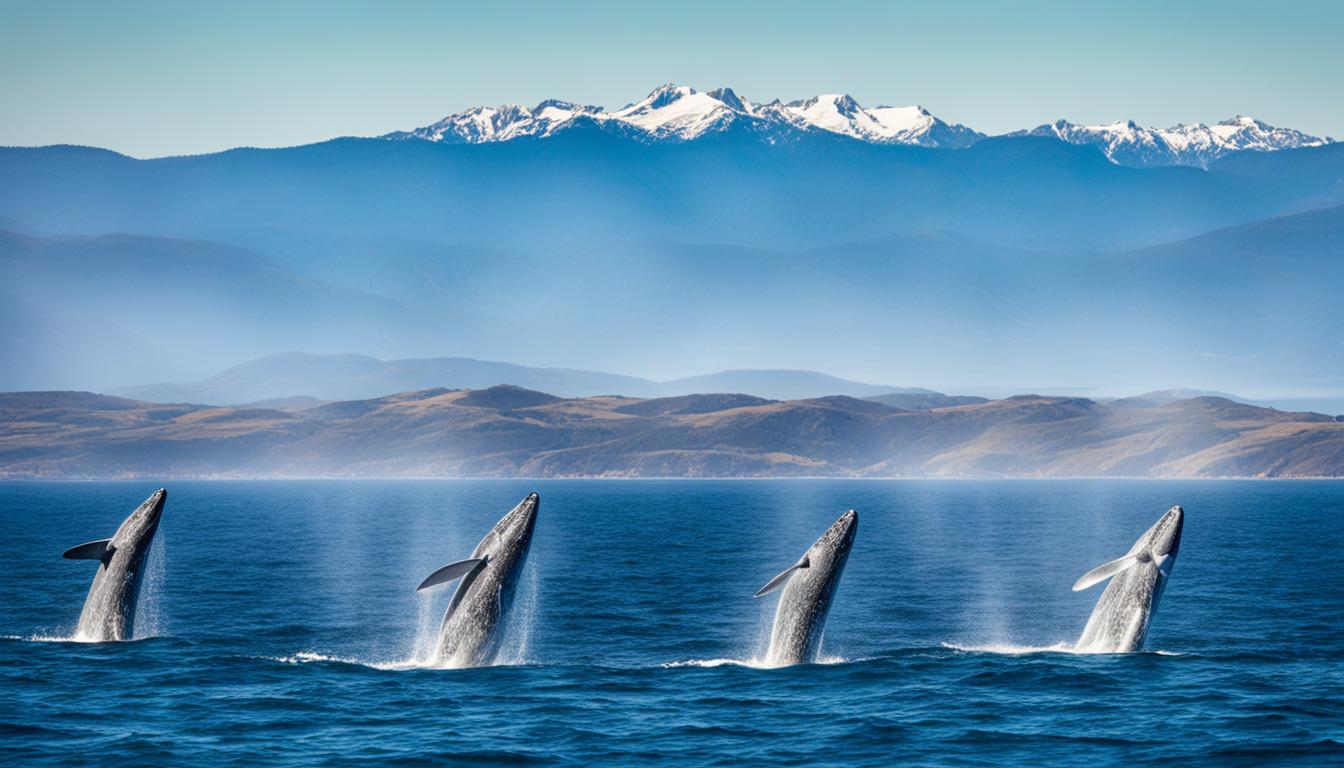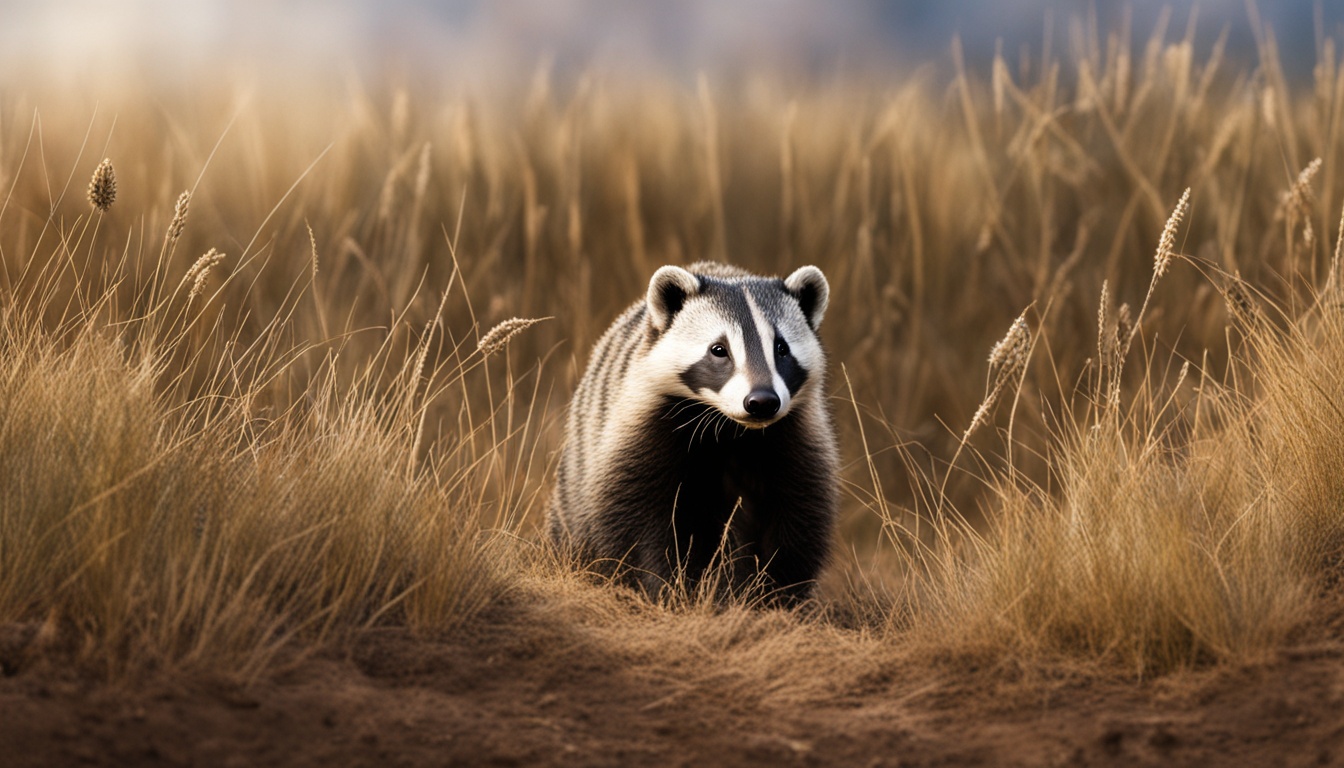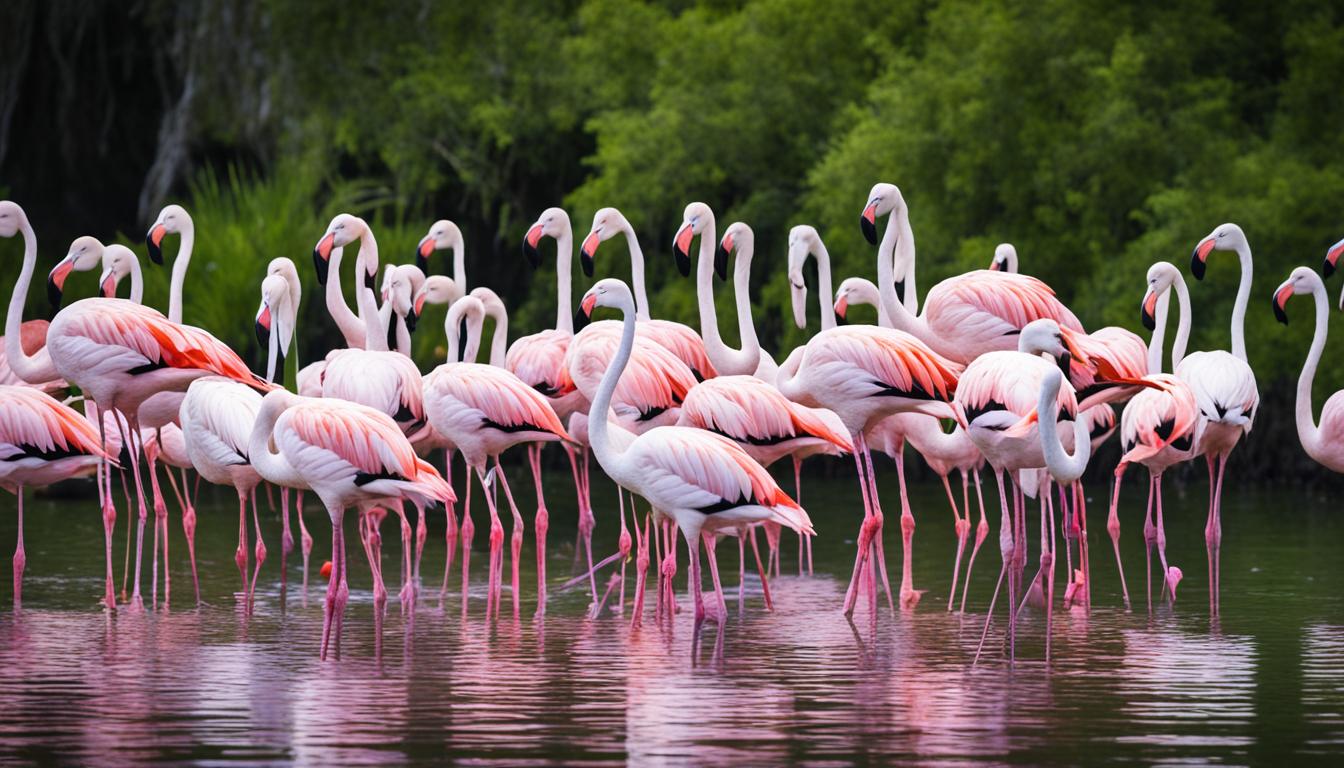Venus flytraps are unique carnivorous plants that require specific soil conditions to thrive. Understanding the ideal soil type for these plants is crucial for their healthy growth and development.
In this section, we will explore the optimal soil conditions for Venus flytraps, the recommended soil composition, and how to ensure proper soil drainage. We will also cover additional considerations, such as the pH levels and how to repot your Venus flytrap.
Key Takeaways:
- Venus flytraps require specific soil conditions to thrive.
- The ideal soil composition consists of a mix of peat moss and horticultural sand.
- Proper soil drainage is crucial for the health of Venus flytraps.
- The pH level of the soil should be slightly acidic, between 4 and 5.
- Regular monitoring and adjustment of the soil’s pH can contribute to the overall health of the plant.
Venus Flytrap Soil Requirements
When it comes to the optimal soil composition for the growth of Venus flytraps, there are several factors to consider. The recommended soil for Venus flytraps should mimic their natural environment and promote healthy growth.
The optimal soil for Venus flytrap cultivation must be well-draining to avoid waterlogged roots. This is because these carnivorous plants are native to swampy areas with poor soil conditions. Therefore, the soil composition for Venus flytrap growth must strike a balance between providing the necessary nutrients while allowing excess moisture to drain out.
| Soil Component | Percentage |
|---|---|
| Peat Moss | 70% |
| Horticultural Sand | 30% |
The ideal soil composition for Venus flytrap growth is a mix of 70% peat moss and 30% horticultural sand. This combination provides the necessary nutrients and drainage required for these unique plants to thrive.
It is crucial to note that Venus flytraps do not require fertilizer and can be harmed by it. Therefore, it is essential to use only the recommended soil for Venus flytraps when cultivating these plants.
Ideal Soil Composition for Venus Flytrap Growth
Venus flytraps require a specific type of soil to thrive, and the ideal soil composition for these carnivorous plants consists of a mix of peat moss and horticultural sand. This combination provides the necessary nutrients and drainage to support healthy growth and development.
Peat moss is an essential component of Venus flytrap soil because it is acidic and nutrient-poor, which mimics the plant’s natural habitat. Horticultural sand, or silica sand, is also needed because it improves drainage and prevents waterlogged roots.
When mixing the soil for your Venus flytrap, use one-part peat moss to one-part horticultural sand. It’s crucial to avoid using regular garden soil as it contains too many nutrients and isn’t well-draining, both of which can harm the plant.
It’s important to note that Venus flytraps are sensitive to minerals commonly found in tap water, such as calcium and magnesium. Therefore, it’s best to avoid using tap water for watering and instead use distilled or rainwater to maintain the desired soil composition.
The ideal substrate for Venus flytrap growth is an acidic, nutrient-poor, and well-draining mix of peat moss and horticultural sand. By providing your plant with the proper soil composition, you can help ensure its long-term success.
Choosing the Right Venus Flytrap Potting Mix
When it comes to selecting a potting mix for your Venus flytrap, it’s essential to choose one that is specifically formulated for carnivorous plants. These mixes usually contain a blend of sphagnum moss, perlite, and sand, providing the ideal conditions for your plant’s growth and feeding.
The sphagnum moss provides the necessary acidity that Venus flytraps require, while perlite helps with drainage and aeration, preventing waterlogged roots. The sand component of the mix mimics the natural environment of the plant, allowing it to thrive.
While it may be tempting to use regular potting soil, it’s important to note that it may contain nutrients that Venus flytraps cannot handle, leading to their eventual decline. Additionally, a mix that is too dense can impede drainage, causing water to accumulate in the pot and suffocate the roots.
By using a suitable potting mix, you can ensure your Venus flytrap receives the appropriate nutrients and conditions for healthy growth and successful feeding.
Ensuring Proper Soil Drainage
When it comes to Venus flytrap soil requirements, proper drainage is crucial for their growth and development. Since these carnivorous plants are native to nutrient-poor, acidic soils with excellent drainage, they will not thrive in typical garden soil or potting mix. To create the ideal soil for Venus flytraps, you need to ensure that it adequately drains excess water and provides the right balance of nutrients.
The best soil for Venus flytraps is one that is well-draining, meaning that it does not hold onto water for too long. Soil that is too compacted or dense will not allow excess moisture to escape, leading to waterlogged roots and eventually damaging or killing the plant. To ensure proper drainage, you can create a drainage layer at the bottom of the pot, such as small rocks or pebbles, to prevent the roots from sitting in standing water.
Choosing the right potting mix is also essential to ensuring proper soil drainage. The ideal soil for Venus flytraps is a mixture of peat moss and horticultural sand in a 1:1 ratio. This combination will provide the necessary nutrients and drainage for the plant to thrive.
To create the optimal soil composition for Venus flytraps, you can mix 1 part sphagnum peat moss and 1 part horticultural sand together. Avoid using regular sand or beach sand, as they can contain harmful minerals that can damage the plant. Instead, choose horticultural sand or silica sand, which are free of unwanted minerals and provide the right texture for proper drainage.
Ideal Soil Composition for Venus Flytrap Growth
When it comes to venus flytrap soil requirements, the ideal soil composition consists of a blend of peat moss and horticultural sand. Peat moss provides the necessary nutrients and acidity levels, while sand ensures the soil is well-draining.
It is important to note that regular potting soil or garden soil should not be used for venus flytraps. These types of soil are typically nutrient-rich and retain too much moisture, which can cause root rot and harm the plant.
In addition to the recommended soil for venus flytraps, you may also choose to add perlite or vermiculite to the soil mix. These materials can help with aerating the soil and improving drainage.
Overall, the best substrate for venus flytrap growth is a combination of peat moss, horticultural sand, and possibly perlite or vermiculite to ensure optimal soil conditions.
Repotting Venus Flytraps
If your Venus flytrap has outgrown its current pot or the soil has become depleted of nutrients, it’s time to repot your plant. Repotting your Venus flytrap ensures that it gets fresh, nutrient-rich soil and enough space to continue growing.
Before repotting, gently remove the plant from its current pot and inspect the roots. Trim any dead or damaged roots to encourage healthy growth.
Next, choose a pot that is slightly larger than the current one and has drainage holes at the bottom. Create a drainage layer at the bottom of the pot by adding a thin layer of pebbles or perlite.
Fill the pot with a high-quality potting mix formulated specifically for carnivorous plants. The ideal mix should consist of a combination of sphagnum moss, perlite, and sand, providing the necessary nutrients and drainage for the plant to thrive.
When repotting, make sure to place the plant at the same depth as it was in its previous pot. Gently tamp down the soil around the plant and water thoroughly.
It’s best to repot Venus flytraps in the spring or early summer when the plant is actively growing. Repotting during the dormant season can shock the plant and disrupt its growth.
Conclusion
Choosing the right soil for your Venus flytrap is essential for its overall health and growth. In summary, Venus flytraps require well-draining soil that mimics their natural habitat. The ideal soil composition consists of a mix of peat moss and horticultural sand. When selecting a potting mix, choose one specifically formulated for carnivorous plants, containing a blend of sphagnum moss, perlite, and sand. Proper soil drainage is crucial for the health of your Venus flytrap, so be sure to create a drainage layer at the bottom of the pot and use a well-draining mix. Besides the appropriate soil composition and drainage, it’s important to monitor the soil’s moisture levels and pH. When necessary, consider repotting your Venus flytrap every couple of years to provide fresh, nutrient-rich soil. By following these guidelines, you can create the optimal conditions for your Venus flytrap to thrive and capture its prey.
How Does Soil Quality Affect the Lifespan of Venus Flytraps?
The lifespan of a venus flytrap heavily depends on the quality of the soil it grows in. These carnivorous plants thrive in acidic, nutrient-poor soil, mimicking their native habitat of bogs and wetlands. Soil low in nutrients, especially with a lack of nitrogen, prompts the flytrap to digest insects to supplement its diet and survive. Conversely, poor soil quality can hinder the plant’s growth, reducing its lifespan. Therefore, maintaining suitable soil conditions is crucial for the longevity of a Venus Flytrap.
FAQ
Q: What type of soil is best for Venus flytraps?
A: The ideal soil composition for Venus flytrap growth consists of a mix of peat moss and horticultural sand. This combination provides the necessary nutrients and drainage for the plant to thrive.
Q: What are the Venus flytrap soil requirements?
A: Venus flytraps require a specific type of soil that mimics their natural habitat. The soil should be well-draining to prevent waterlogged roots and create a favorable environment for the plant’s development.
Q: What is the ideal soil composition for Venus flytrap growth?
A: The ideal soil composition for Venus flytrap growth consists of a mix of peat moss and horticultural sand. This combination provides the necessary nutrients and drainage for the plant to thrive.
Q: How do I choose the right Venus flytrap potting mix?
A: When selecting a potting mix for your Venus flytrap, it’s essential to choose one specifically formulated for carnivorous plants. These mixes usually contain a blend of sphagnum moss, perlite, and sand, ensuring the proper conditions for your plant’s growth and feeding.
Q: How can I ensure proper soil drainage for Venus flytraps?
A: Proper soil drainage is crucial for the health of Venus flytraps. The soil should not retain excess water, as it can lead to root rot and the eventual decline of the plant. Creating a drainage layer at the bottom of the pot and using a well-draining potting mix can help maintain the appropriate moisture levels.
Q: Are there any additional considerations for Venus flytrap soil?
A: Besides the appropriate soil composition and drainage, it’s important to consider other factors such as pH levels. Venus flytraps prefer slightly acidic soil with a pH between 4 and 5. Regular monitoring and adjustment of the soil’s pH can contribute to the overall health of the plant.
Q: How often should I repot Venus flytraps?
A: Venus flytraps may require repotting every couple of years to provide fresh, nutrient-rich soil. During the repotting process, it’s crucial to remove any dead or damaged roots and use a high-quality potting mix to ensure the plant’s successful transition.

